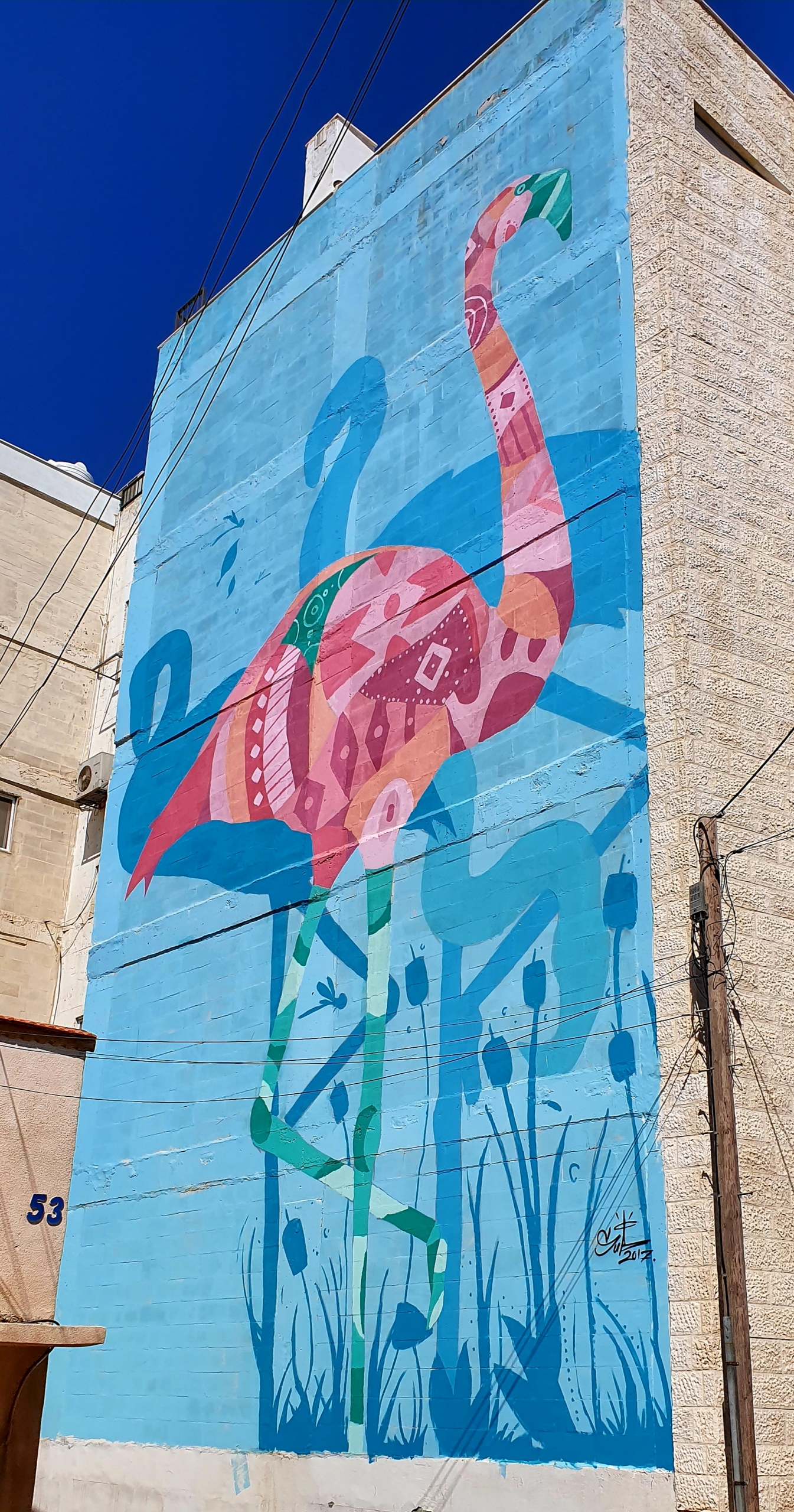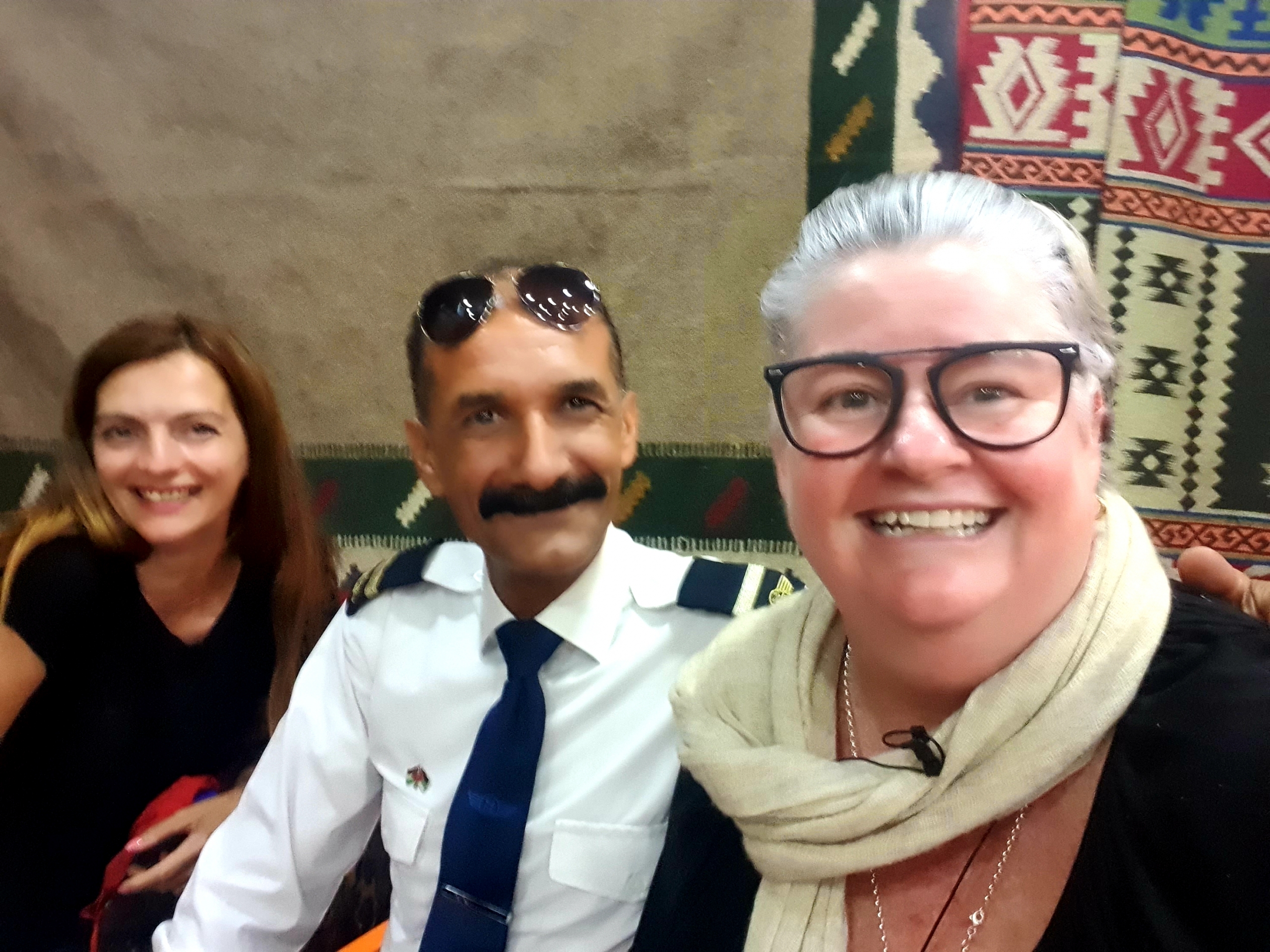Jordan continues to be a country rich in history with antiquities everywhere. If you have limited time to visit, your short list of sites should include Qasr Al-Azraq, Qsar Amra and Qasr Al Kharana desert castles. By the way, all these antiquities are accessible with you Jordan Pass.
Al Azraq or The Blue Fortress
Be prepared to be awed by a massive black basalt structure that was originally three stories. For me, the most striking feature remains the entrance with its revolving stone door, which opens or closes if pressure is applied to its center. The next truly inventive architectural feature over the main door is the machicolations, Meutrière or murder hole. This design feature allows those being attacked to pour hot oil over the vicious intruders demanding access.
This nearly impenetrable fortress has been part of Roman and Umyadda history, dating back to the dawn of the 13th Century. Al Azraq also served as headquarters for the famous Lawrence of Arabia in 1917 during The Arab Revolt. A well-preserved 80-meter wall encircles both a courtyard and a mosque. Like most antiquities in Jordan, visitors can climb to the upper levels. However, be aware that this is a raw antiquity, so exercise caution when you are walking. Helpful informational boards are scattered around the site to guide you, but more excavation will be needed to discover Azraq’s full and turbulent history.
If you don’t have a Jordan Pass, tickets are available at the Tourist Center in a lane opposite the site. There are limited parking facilities and available toilets. Expect to pay a local guide 10JD for thirty to forty minutes at the site.
Qsar Amra
Qsar Amra, a small, bright yellow limestone and basalt building, probably distinguishes itself as one of the best known of the desert castles. Built sometime between 723 and 743 during the Umayyad Period, Amra represents one of the most important examples of Islamic architecture and art. Part of a larger complex, this royal retreat is adorned with fascinating frescoes.
An on-site guide demonstrates the well and water cistern supplying the bathhouse. Possessing key access to the bathhouse, your guide may speel off his well-rehearsed, but entertaining speech about the site. When we visited that part, our guide pointed out images in the fresco. He showed us a bear playing a guitar, naked ladies, and faces that may represent Jesus, Peter,and Paul. He demonstrated with his pointer cane how the airflow and smoke evacuation technology worked, bringing the ancient building to life with his explanation. When I visited Amra, I was unable to tip our guide because I failed to bring a stash of money for that purpose, but he appeared gracious, showing no disapproval at not receiving a gratuity.
Had I remembered my money, I would have surely given him 5 to 10JD for his time because his guidance made for a well-informed visit through the castle. Be sure to look for a Bedouin tent housing both souvenirs and refreshments in the car park. Toilet facilities are available at the visitor center. This entry fee was also covered with the Jordan Pass.
Al Kharana
The large castle of several names—Qasr al-Harrana, Kharaneh or Hraneh—is accessed via the visitor center, only a short walk away. There is an ongoing debate about Kharana’s function. It appears to be a camel caravan site even though it is not on any major trade routes. Located on the barren moonscape harra, or gravel plains, this imposing two-story Umayyad castle-like structure features unusual arrow slit holes, which are more likely venturi air ventilation holes.
Quietly exploring this well-preserved site by myself was relaxing. I felt a certain calmness and peaceful serenity, despite the imposing silence of the sixty rooms built around a central courtyard.
Without a Jordan Pass, seeing this wonderful castle will cost 2JD. Pack your bags, travel adventurers! Jordan is waiting for you.








